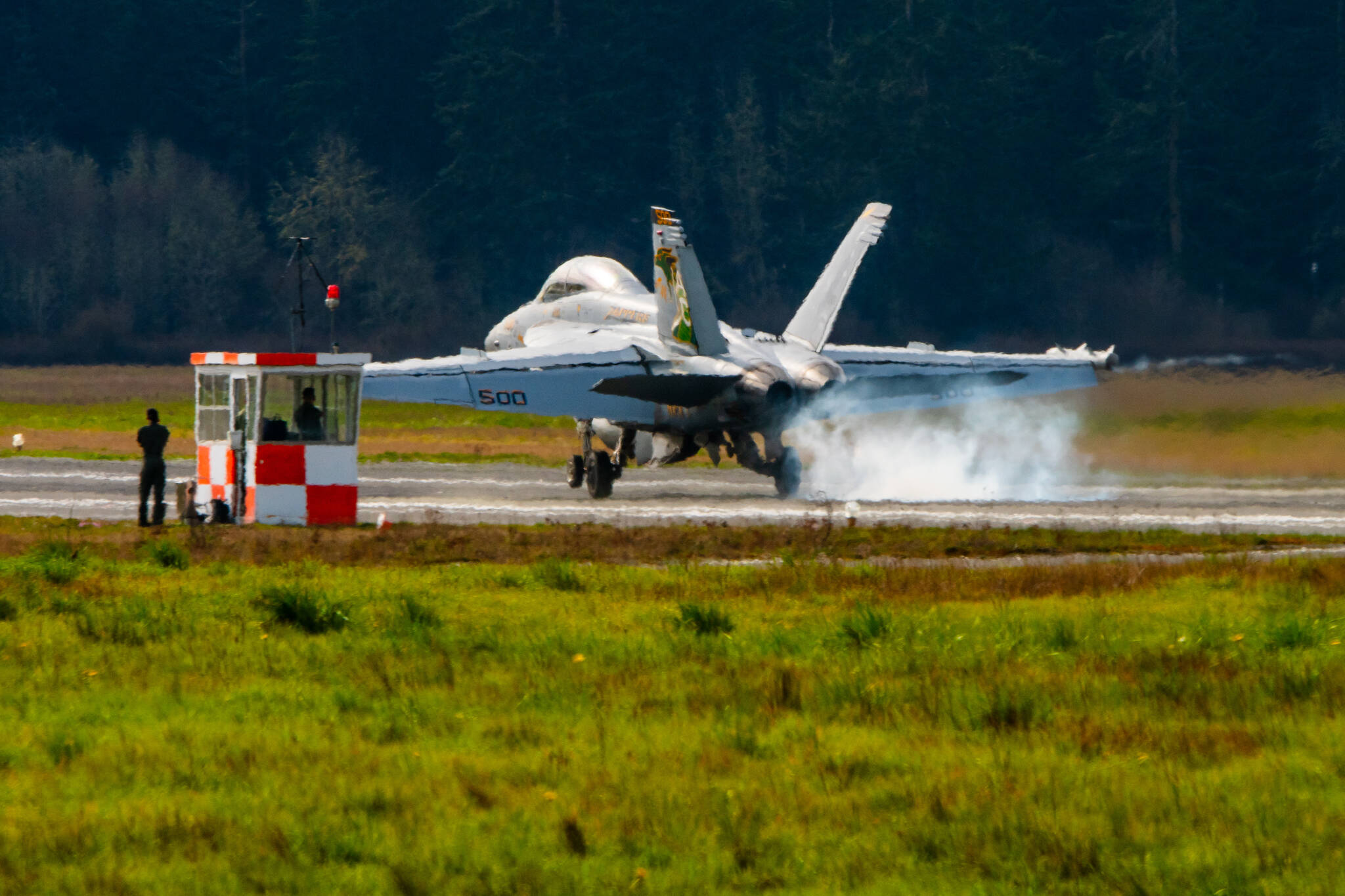The Navy is expecting to complete a court-ordered supplemental analysis of an environmental study of EA-18G Growlers at Naval Air Station Whidbey Island by approximately Feb. 1, 2025.
After that, the supplemental drafts will be available for public comment while the Navy plans to have in-person and virtual public meetings no later than mid-March, according to the status report filed Nov. 15 in federal court.
At the same time, the Navy is appealing the federal judge’s ruling necessitating the supplemental analysis, while the Whidbey anti-noise group Citizens of Ebey’s Reserve, or COER, filed a notice of cross-appeals of several of the judge’s decisions. The appeals were filed in the Ninth District Court of Appeals.
The litigation over Growler noise began in 2021, when the state Attorney General’s Office and COER sued the Navy over perceived deficiencies in the Environmental Impact Statement prepared to consider the impacts of additional Growlers and additional training. Much of the focus has been on the Outlying Field Coupeville, where training operations were set to increase fourfold.
U.S. District Court Judge Richard Jones found that the EIS failed to quantify the impact of Growler noise on classroom learning; failed to disclose the basis for greenhouse gas emissions calculations; failed to take a hard look at species-specific impacts on birds; and failed to give detailed consideration of the idea of moving Growlers to El Centro, California.
Subsequently, the judge ordered the Navy to redo the EIS but without vacatur. The judge agreed with the Navy that operations can continue at the current level while the study is being done in order to protect the electronic warfare mission deemed vital to national security.
In August, Jones ruled that the Navy must submit status updates every 90 days until the May 1, 2025 deadline, although the Navy can request extensions. The first update was filed last week.
The status report states that the Navy is working with a contractor to do the supplemental work. Since November 2023, the contractor completed “an updated review of the available scientific literature, including journal articles, policies, guidance, surveys and data, and incorporated this information into an initial draft supplemental analysis.”
The report explains that the draft is under review by Navy subject matter experts. Once the draft is finalized, the Navy will publish a Notice of Availability in the Federal Register to let people know that the draft is available for public comment.
According to the status report, the Navy is in the process of developing a public involvement process.
“Such a plan includes public notifications of the availability of the draft, a website, and visual aids to assist the public,” the report states. “This plan also includes providing the public the opportunity to comment and discuss the draft supplemental analysis with Navy subject matter experts.”
After a comment period, the Navy will respond to comments, finalize and release the final supplemental analysis and, at least 30 days later, issue a new Record of Decision.
At the same time, an appeal and cross-appeal will continue in the Ninth Circuit. A schedule in the case shows that a mediation status report is due Dec. 30, the Navy’s opening appeal is due Jan. 7 and answering appeal briefs by the state of Washington and COER are due Feb. 6.
Robert Wilbur of COER said he had no comment on the appeals.
In a statement, the Oak Harbor Area Council of the Navy League said it makes sense for the Navy to appeal since the case has larger implications for many costly EIS efforts.
“Navy carrier operations and current geopolitics remain a perilous business. Growlers and their aircrew have achieved unparalleled success deterring Russia from expanded aggression, maintaining a 100% record while protecting U.S. and allied aircraft, plus saving many lives of ground forces,” the statement reads. “The time and effort of Navy leadership and the public interest of taxpayers should be better spent on the readiness of our fighting men and women rather than upon never-ending litigation against Navy operations and mitigating new interpretations of process law.”




